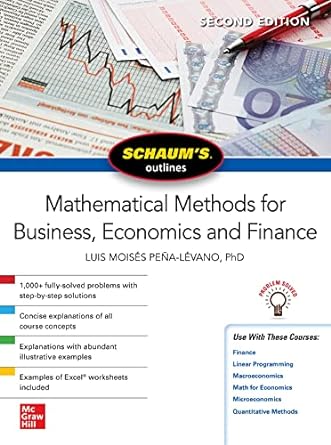Which of the following equations are functions and why? (a) y = 3x + 8 The equation
Question:
Which of the following equations are functions and why?
(a) y = −3x + 8 The equation y = − 3x + 8 is a function because for each value of the independent variable x there is one and only one value of the dependent variable y. For example, if x = 1, y = −3(1) + 8
= 5. The graph would be similar to
(a) in Fig. 3-6.
(b) y2 = x The equation y2 = x, which is equivalent to , is not a function because for each positive value of x, there are two values of y. For example, if y2 = 4, y = ±2. The graph would be similar to that of
(b) in Fig. 3-6, illustrating that a parabola whose axis is parallel to the x axis cannot be a function.
(c) y = x2 The equation y = x2 is a function. For each value of x there is only one value of y. For instance, if x = −6, y = 36. While it is also true that y = 36 when x = 6, it is irrelevant. The definition of a function simply demands that for each value of x there be one and only one value of y, not that for each value of y there be one and only one value of x. The graph would look like
(c) in Fig. 3-6, demonstrating that a parabola with axis parallel to the y axis is a function, regardless of whether it opens up or down.
(d) y = 6 The equation y = 6 is a function. For each value of x there is one and only one value of y. The graph would look like
(d) in Fig. 3-6.
(e) x2 + y2 = 81 The equation x2 + y2 = 81 is not a function. If x = 0, y2 = 81, and y = ±9. The graph would be a circle, similar to
(e) in Fig. 3-6. A circle does not pass the vertical line test.
(f) x = 8 The equation x = 8 is not a function. The graph of x = 8 is a vertical line. This means that at x
= 8, y has an infinite number of values. The graph would look like
(f) in Fig. 3-6.
Step by Step Answer:

Schaum S Outline Of Mathematical Methods For Business Economics And Finance
ISBN: 978-1264266876
2nd Edition
Authors: Luis Moises Pena Levano




